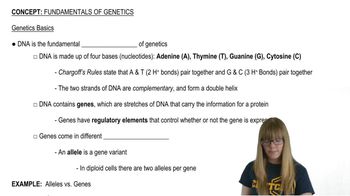What might Watson and Crick have concluded had Chargaff's data from a single source indicated the following?
Why would this conclusion be contradictory to Wilkins's and Franklin's data?
 Verified step by step guidance
Verified step by step guidance Verified video answer for a similar problem:
Verified video answer for a similar problem:

